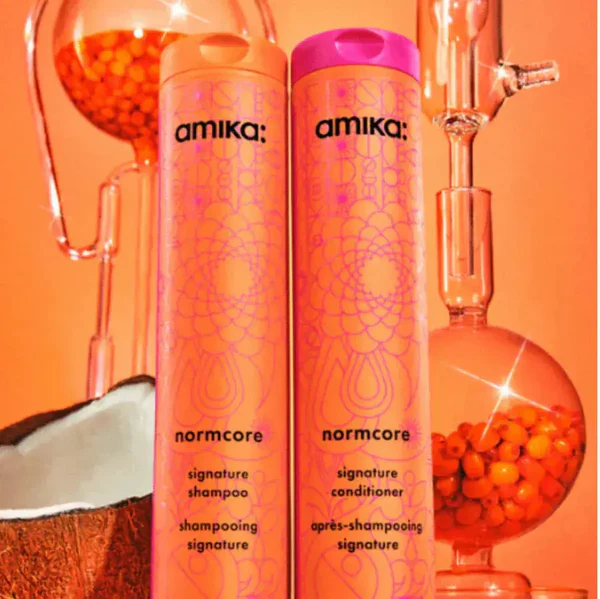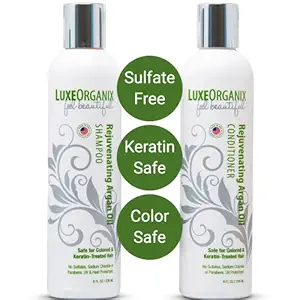When you hear the term “light shampoo,” what is usually meant is a shampoo with a lightweight formula—one that’s designed to cleanse hair effectively without leaving heavy residue or making the hair feel weighed down.
Here’s a breakdown of what that means, who it’s good for, and how to use it.
Table of Contents
What Makes a Shampoo “Light”
A lightweight shampoo typically has several characteristics:
- The texture is thinner (more fluid) rather than thick and creamy.
- It uses milder cleansing agents and fewer heavy-duty oils, butters, waxes, or silicones that can coat hair and drag it down.
- The goal is to clean while maintaining hair’s natural volume and movement rather than flattening or limiting bounce.
- Some formulas may also be free of certain ingredients (e.g., silicone-free, sulfate-free) and designed specifically for fine hair or hair that loses volume easily. (Lazartigue USA)
Who is a light shampoo good for
Using a lightweight shampoo makes sense in certain situations:
- If your hair is fine or thin, it’s particularly beneficial because heavier shampoos can flatten or weigh down the hair strands. (Head and Shoulders)
- If your hair naturally lacks volume or you want to preserve natural texture (waves or loose curls) without it feeling heavy. (Wella)
- If you use styling products regularly and want a shampoo that cleans well without leaving residual build‑up that “crunches” your hair or reduces movement.
However, note that “light” doesn’t always mean “weak.” A good light shampoo still cleanses the scalp and hair properly—just with a formula that avoids unnecessary heaviness.
Key ingredients and labels to look for
When shopping for a lighter shampoo, you might check for these features:
- Water (aqua) listed first in the ingredient list, suggesting a lighter base. (Merwave)
- Avoid having oils, butters or waxes really high up in the ingredient list if you want to avoid heaviness. (Merwave)
- Label claims like “volumising,” “light weight,” “fine hair,” “will not weigh down,” “silicone-free,” or “sulfate-free” can be helpful but always check the actual ingredients.
- Mild cleansing surfactants (instead of very aggressive ones) if your scalp is sensitive or you wash often. (Healthline)
How to use it for best results
Here are some tips to get the most from a light shampoo:
- Focus shampoo on the scalp and roots where oil and residue build up; let the lather run down the lengths. This avoids unnecessary product wastage and lower hair strands getting extra product.
- If you use a conditioner after shampooing, apply it mostly on the mid‑lengths and ends, not right onto the roots, if your goal is volume and lightness.
- If your hair gets extra oily or you use heavy styling products, you might occasionally need a stronger clarifying shampoo to reset build‑up, then return to your light shampoo for regular use.
- Consider how often you wash: if you wash frequently (say several times a week), a light shampoo helps avoid over‑stripping or flattening the hair.
- Observe how your hair feels: if it still feels limp or weighed down, you might have product build‑up or need to adjust how much shampoo or conditioner you use.
Potential things to watch out for
- Because a light shampoo does less heavy coating or smoothing, if your hair is very dry, very thick, or highly damaged it may feel that it lacks “slickness,” and you might need a richer formula or a treatment mask periodically.
- “Lightweight” is a marketing term, so always check the ingredient list and how it works on your particular hair texture.
- Even a light shampoo can cause scalp or hair irritation if you’re sensitive to a particular surfactant or fragrance.
If you’re searching for a way to refresh your hair without weighing it down, a light moisture shampoo could be the perfect solution. These shampoos cleanse gently while providing hydration and shine, keeping your hair soft and bouncy rather than flat or greasy.
Here’s a detailed look at what a light moisture shampoo does, who it works best for, and some top recommended options to try.

What Is a Light Moisture Shampoo?
- Gentle, sulfate‑free cleansing: These formulas typically avoid harsh sulfates or silicones, which can strip natural oils and leave hair feeling dry.
- Hydrating & humectant-rich ingredients: Common actives include glycerin, aloe vera, hyaluronic acid, ceramides, argan oil, shea butter, red algae, coconut oil, and peptides—hydrators that add moisture without weighing hair down.
- Targeted for fine, dry, frizzy, or color-treated hair: They support dryness while maintaining bounce, volume, and shine.
Who Benefits Most?
- Fine or limp hair: Heavy shampoos can weigh down strands, so lightweight hydrators maintain fullness while moisturizing.
- Dry or damaged hair: If your scalp or ends feel brittle, these formulas can replenish hydration gently.
- Color-treated or chemically sensitive hair: Sulfate-free, moisture-rich types help protect color and minimize damage.
- Anyone seeking balance: You get hydration without the heaviness—ideal for everyday use or if you skip conditioner occasionally.
What Experts Recommend in 2025
Best Lightweight Hydrating Shampoo #1: Amika Normcore Signature Shampoo

Praised as the top overall choice for dry hair: hydrating, gentle, and performs well paired with Normcore conditioner ($27 at Amazon).
Light Hydrating Shampoo #2: Moroccanoil Hydrating Shampoo
Sulfate- and parabens-free, with argan oil + red algae + vitamins A & E; delivers shine and softness without heaviness.
Light Moisturizing Shampoo #3: Crown Affair Hydrating Shampoo
Cream-like, rich in coconut and red algae, great scent, moisturizes without weighing down.
Lightweight Moisture Shampoo #4: CeraVe Gentle Hydrating Shampoo
Dermatologist-developed, includes ceramides, hyaluronic acid, niacinamide; very gentle and budget-friendly for sensitive or dry scalps .
K18 Damage Shield pH Protective Shampoo – award-winning formula with peptides to strengthen from inside; hydrates, repairs, and adds condition without bulk.
Ingredient snapshots
| Ingredient | Benefit |
|---|---|
| Glycerin, Aloe, Hyaluronic Acid | Attracts and retains moisture in hair fibers |
| Ceramides, Shea Butter, Coconut/Argan Oils, Red Algae | Seal in hydration, nourish and soften strands |
| Peptides (e.g. K18) | Restore strength and elasticity from inside |
Use ingredients like glycerin or argan oil for lightweight moisture—or go heavier with ceramides or proteins if you need repair and softness in addition to hydration.
Key Takeaways and Tips
- Look for sulfate-free cleansers and hydrating actives (glycerin, ceramides, oils) to prevent dryness and keep your hair light.
- Choose based on hair texture and needs:
- Fine/flat hair ➝ lightweight hydrators like Crown Affair, Amika Normcore.
- Dry or damaged hair ➝ richer hydrators with ceramides or peptides (e.g. CeraVe, K18).
- Use less often: Daily to twice-weekly is often enough to prevent over-stripping dry hair.
- Hydration habits matter: Pair your shampoo with a matching conditioner or a weekly hair mask for lasting softness and manageability.
Final recommendations
- Go for Amika Normcore Shampoo if you want salon-grade hydration that’s weightless.
- If your scalp is sensitive or you need a wellness approach, CeraVe Gentle Hydrating Shampoo is affordable and effective.
- For color-treated or curated hydration routines, Moroccanoil Hydrating Shampoo provides moisture with luxe oils and shine.
Best Moisturizing Shampoo #6: LuxeOrganix Rejuvenating Argan Oil Shampoo
Photo credits: Boozyshop, Rattankun Thongbun / Getty Images,
